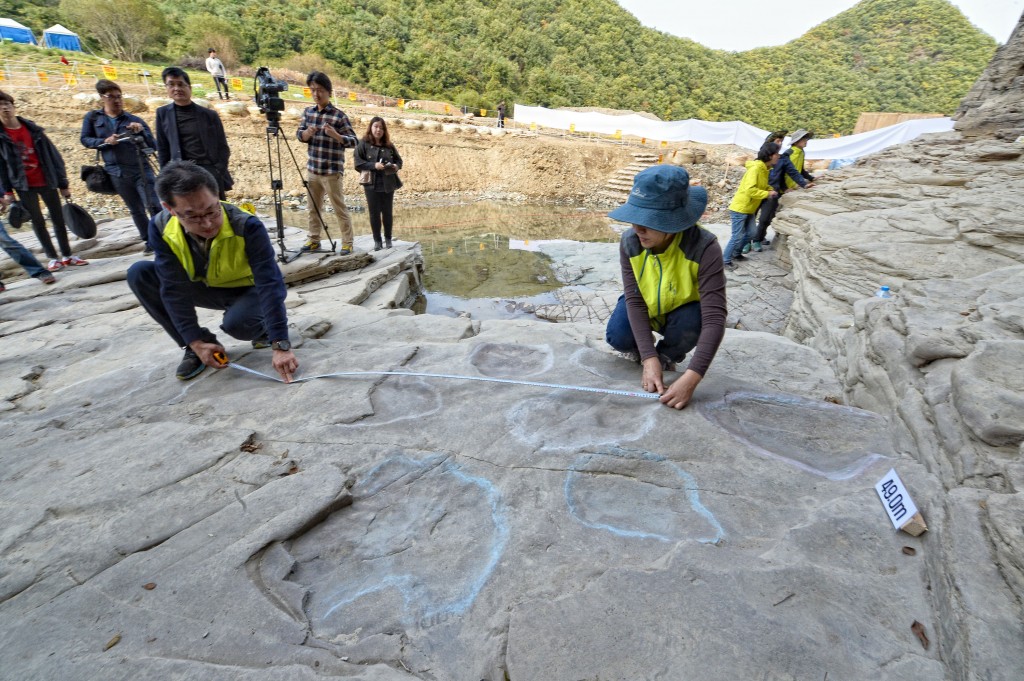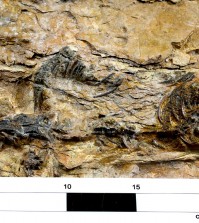- California Assembly OKs highest minimum wage in nation
- S. Korea unveils first graphic cigarette warnings
- US joins with South Korea, Japan in bid to deter North Korea
- LPGA golfer Chun In-gee finally back in action
- S. Korea won’t be top seed in final World Cup qualification round
- US men’s soccer misses 2nd straight Olympics
- US back on track in qualifying with 4-0 win over Guatemala
- High-intensity workout injuries spawn cottage industry
- CDC expands range of Zika mosquitoes into parts of Northeast
- Who knew? ‘The Walking Dead’ is helping families connect
Dinosaur Tracks Found in Korea

This photo shows 25 fossilized dinosaur footprints recently discovered by researchers on a rock near the site along a tributary of a river in Ulsan where the construction of a dike-like movable dam is under way to better preserve a set of prehistoric engravings from being eroded in floodwater. (Yonhap)
(Yonhap) Dozens of fossilized dinosaur footprints have been discovered along the rocky banks of a stream near a set of prehistoric engravings in the southeastern part of the country, a government think tank said Tuesday.
Announcing the result of an archaeological survey, the National Research Institute of Cultural Heritage said its researchers have found 25 dinosaur footprints on a rock 25 to 30 meters northeast of the cliff with the Bangudae Petroglyphs engraves etched into its rock face.
The survey was conducted ahead of the planned construction of a dike-like movable dam in front of the prehistoric engravings to preserve them from erosion by flood waters. The so-called “kinetic dam” will encircle the national treasure located on the lower part of the cliff in the tributary of a river, according to officials.
South Korea plans to apply the Bangudae Petroglyphs for UNESCO world heritage designation by 2017.
Deduced from their shape and quantity, the footprints appear to have been left by at least five herbivorous dinosaurs around 10 billion years ago during the cretaceous period, the institute said.
The latest discovery increased the number of sites where fossilized dinosaur footprints have been found in Ulsan, 410 kilometers southeast of Seoul, to 16 with 12 of them in concentrated areas near the Daegok Stream.
There are nine sites of fossilized dinosaur footprints in South Korea classified as natural monuments.
The Cultural Heritage Administration, the top government office in charge of the nation’s cultural assets, said it will soon come up with measures to preserve the newly found dinosaur tracks. Any decision by the authority to preserve the dinosaur tracks may cause a major setback to the dam construction project.













